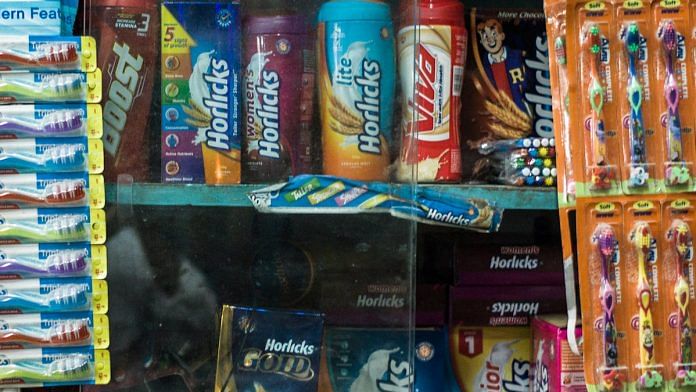The malty empire of Horlicks will stay in India, but will it grow is the question.
Unlike most Indian children, drinking milk with Horlicks/Boost/Bournvita/Complan was not a daily staple for me growing up. I was a fat kid, and my parents were very sure (despite the barrage of advertisements) that I didn’t need more sugar in my system. Still, teaspoons of dry, crunchy powder were often sneaked in after lunch. The taste of malted milk continues to define childhood nostalgia for many generations.
The seductive idea of ‘extra nutrition’ has played a massive part in its sales too. Most urban, middle-class Indians have vivid memories of drinking glasses of Horlicks or the like before exams. In a fiercely competitive country like ours, if something promises better marks and stronger health, it will be bought.
From Buzzfeed to some of the most cutting-edge culinary masters, everyone is capitalising on malt loyalties. The weight of this legacy is clearly not something to be dismissed if Unilever is reportedly willing to pay GlaxoSmithKline $3 million for its consumer-health unit, which includes Horlicks.
Also read: Health drinks like Bournvita, Horlicks give your kids more sugar & hardly any nutrition
Everyone wants to own the capacity to command the memories of a happy childhood, but what is the reality of the Horlicks phenomenon?
On first look, Horlicks looks like a promising proposition. With a comfortable share of 60 per cent of the estimated ₹7,000-crore health food drink market, Horlicks is India’s largest-selling malt brand. Although the sale of Horlicks is slowly going down, it’ll be a while before malt drinks are pushed off the shelf in the country.
The Horlicks Badhne ki Bhook (hunger to grow) and the Horlicks Exam Time campaigns and even the Horlicks Women advertisements have been successful in persuading its target demographic about the brand’s usefulness as a nutritious drink.
Indians gladly drink up the Horlicks promise of “taller, stronger, sharper”.
The brand, instead of trying to get a parental buy-in, has mastered the art of cultivating a relationship with its target audience. Indian parents might be aspirational, sure, but it’s the Indian kids who want more. Horlicks was the easy way out – instead of having to eat vegetables and fruits or something one disliked, a glass of malty sweet Horlicks was always the tastier option out. Most urban Indian parents felt that they had done their job after making children gulp down a glass of Horlicks every day.
Horlicks, however, has actually worked in India not because it is “clinically proven” to make children smarter, but due to the lack of fresh milk. After Independence, milk shortage resulted in malnutrition, and Horlicks, an American company, branded itself as a milk substitute.
But can Horlicks really fix malnutrition? In a myth-busting article, ThePrint’s Sandhya Ramesh lays down the rather unsavoury reality. As she points out, there’s barely any independent research done to verify these exaggerated claims of nutritional value and further points out how even the minute benefits also get destroyed by simple mismatch of chemistry and intent. Horlicks is mostly sugar and diabetes is one of the fastest growing lifestyle diseases in Indian households – that sounds like a recipe for disaster.
Also read: The future of Horlicks and Complan in India
This has been worsened by the rising dietary intolerance in India. Recently, Horlicks was banned in Muzaffarpur, Bihar because it wasn’t ‘definitely’ vegetarian. While this news is limited to one city in one state, it can rattle the faith Indian families, as obsessed with purity as they are, have placed in Horlicks, and the repercussions could be massive.
But Horlicks will stay around? Of course, it will. It’s tooth-achingly sweet, allows you a false sense of superiority, and tastes like childhood dreams. Will it, however, grow? Parents are becoming smarter about nutrition, and the thrust on truly healthy, tasty food might just give good competition to the malty empire Horlicks. The Unilever supply network will allow for deeper market penetration, sure, but I see it losing its sheen over the next few years.
Sweet isn’t always good, and I think Horlicks is going to find that out very soon.
The author is a poet.




Like Samuel Johnson said about plagiarism, what is available not original, what is drinkable is not available for India.
What is being dished out at present is not real which was sold many years back. The same with oveltine as well which suddenly went out of market but now getting imported